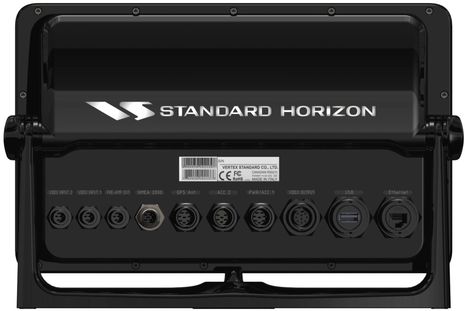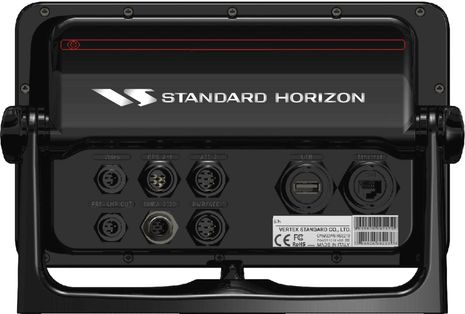Standard Horizon CPN booty, & the great convergence(s)

I wrote about Standard Horizon's new CPN series in December -- and in the current issue of Cruising World -- but now there's more detail up on the SH web site. I particularly like the booty shots of the 1010i and 700i because all those ports really speak to the technological convergence going on with this design. That's the theme I tried to weave through the February CW round-up of new electronics, which unfortunately isn't online yet, and had to be drastically cut due to space constraints anyway. But I'm getting a second chance, sort of, as I'm working on somewhat similar feature for the April issue of Yachting. It will still be shorter than the CW attempt, but it will be purely about how so many of the electronical things we do on boats are coming together, and how it's happening in such divergent ways...
Plus several new quite convergent-y products have appeared since I wrote the Cruising World piece. I'm thinking of Digital Yacht's BoatraNet as well as Spot Connect and BriarTek Cerebrus, but there are others for sure. The changes are happening fast, I think, at least in marine electronics terms. And the Standard Horizon CPN innovation certainly isn't the only representative from the more traditional fixed marine electronics world. Consider the Simrad NSE/NSO series, which has added (C-Zone) system monitoring and contol, SonicHub A/V, and full autopilot control in just the last year. Consider too that on Monday it became official that Navionics and Raymarine have teamed up to offer route and track "plotter sync" between the former's mobile charting apps and the latter's full blown MFD systems. And I've heard that further integration is in the works, and suspect that Navionics would like to work this way with all the hardware vendors. Convergence will happen in many ways.The folks who should pay special attention to the forests of ports on the backsides of these CPN multifunction displays are those who think that iPads and their ilk will soon put a big hurt on fixed marine electronics. First they have to explain how all that connectivity, some of it very specialized and proprietary, will become wireless, standardized to conventional protocols, and truly reliable. But then again we're starting to see marine appliances meant to integrate more marine data with consumer electronics, there's at least one guy in the trade who's positive that a truly free range IP radar sensor will emerge this year, and how long will it be before there are bright, powerful, fully multicasting i or A things? Convergence is going to be interesting, and of course all your opinions are welcome as I try to put this in sentences for Yachting readers.


 Share
Share
> First they have to explain how all that connectivity,
> some of it very specialized and proprietary, will
> become wireless, standardized to conventional
> protocols, and truly reliable.
1. As in almost every other industry, the proprietary hardware and protocols has limited life. It offers nearly no benefit for the consumer and tends to only lock them into a particular vendor.
2. We're already seeing WiFi emerge as the standard, high-bandwidth, wireless medium by which data flows. There are already marine electronics interfaces and adapters using WiFi now and many more surely to come. You wrote about one yourself this week (although that had a proprietary part to it that I wish didn't exist).
I look forward to the day when you show the back of a new high-end piece of marine electronics that only shows a power cord coming out the back. When I see all those connectors, I see it as a step backwards.